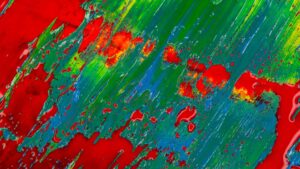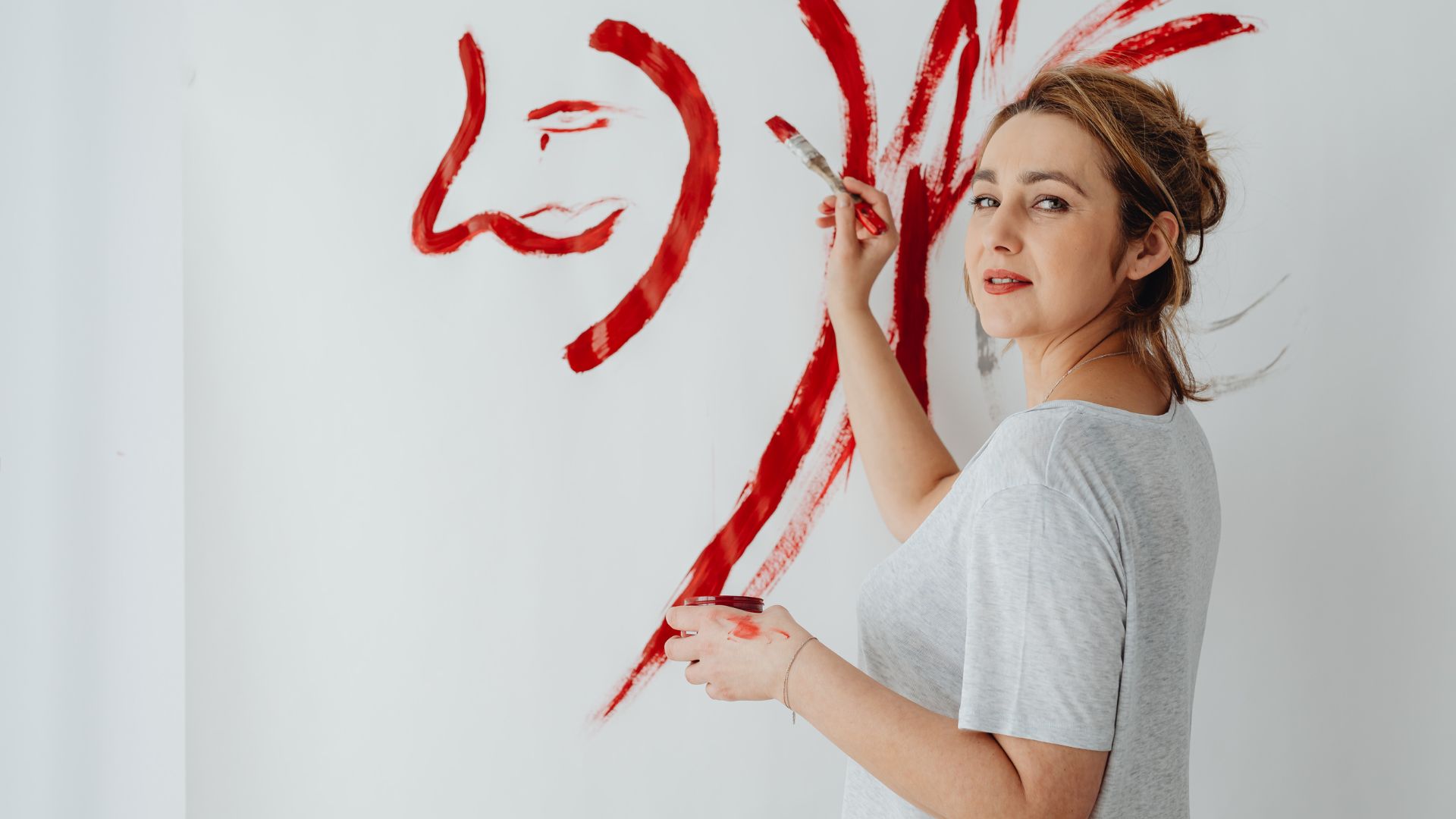Absolutely. Using wall paint on canvas is entirely possible and can produce some fantastic results. Let’s delve into this creative endeavor and explore the nuances and considerations of using wall paint on canvas.
Understanding the Compatibility
Wall paint, typically latex or acrylic-based, can be applied to canvas surfaces. These paints are versatile and adhere well to various materials, including canvas. However, there are a few things to keep in mind:
Factors to Consider
Canvas Preparation
Before applying wall paint, ensure the canvas is properly primed. Gesso, a primer used in traditional painting, creates a suitable surface for paint adhesion. Apply a couple of coats, allowing each to dry thoroughly.
Paint Consistency
Wall paints might have a thicker consistency compared to artist-grade acrylics. To improve flow and workability, consider adding a medium like acrylic glazing liquid or a flow aid. This enhances the paint’s handling on the canvas.
Color Selection
While wall paint offers a wide array of colors, some pigments may differ from those found in artist-grade paints. This variation could affect color mixing and vibrancy, so consider testing colors beforehand.

Longevity and Stability
Artists often use professional-grade paints for longevity and stability of their artwork. Wall paints might have additives or components meant for durability on walls but not necessarily for longevity in artwork.
Advantages of Using Wall Paint on Canvas
Cost-Effective Option
Wall paint tends to be more affordable and readily available compared to artist-grade paints, making it an attractive choice for experimenting or larger projects.
Color Range
The extensive color range of wall paints provides artists with a vast palette to choose from, offering creative freedom and possibilities.
So,…
Using wall paint on canvas is a viable option for artists, especially for those exploring or experimenting with different mediums. However, it’s essential to consider factors like canvas preparation, paint consistency, color selection, and long-term stability when opting for wall paint on canvas. While it’s a cost-effective and versatile choice, artists might still prefer artist-grade paints for their quality, pigments, and longevity.
Remember, creativity knows no bounds, and experimenting with different materials often leads to exciting discoveries in art.
External Resources for Further Reading:
Exploring Creative Possibilities
Artistic Experimentation
One of the joys of art lies in experimentation. Using wall paint on canvas opens up a realm of creative possibilities. Artists can explore unique textures, effects, and color combinations that might not be readily achievable with traditional artist-grade paints.
Mixing Mediums
Combining different mediums can yield intriguing results. For instance, blending wall paint with other art supplies like pastels, markers, or even traditional acrylics can create captivating mixed-media artwork.
Large-Scale Projects
The affordability and accessibility of wall paint make it ideal for large-scale projects. Murals, oversized canvases, or expansive artworks can be accomplished without breaking the bank.
Tips for Using Wall Paint on Canvas
Test and Experiment
Before diving into a full-fledged artwork, conduct test swatches or small-scale experiments to understand how the wall paint behaves on canvas. This helps in familiarizing yourself with its consistency, drying time, and color intensity.
Layering and Building
Given the differences in consistency, layering wall paint may require a slightly different approach. Allow each layer to dry thoroughly before adding subsequent coats to avoid mixing or lifting of the underlying paint.
Sealing and Protecting
Once your artwork is complete, consider sealing it with a suitable varnish or protective layer to enhance longevity and safeguard against environmental factors.
Embracing Artistic Freedom
Art knows no boundaries, and the beauty of creativity lies in embracing diverse techniques and materials. Using wall paint on canvas can be a liberating experience, allowing artists to explore, innovate, and express themselves in new and exciting ways.
Realizing Artistic Potential
Community Projects
The accessibility of wall paint makes it a fantastic choice for community-based art projects. Collaborate with local organizations, schools, or communities to create murals that beautify public spaces and foster a sense of togetherness.
Expressive Techniques
Wall paint offers an opportunity for expressive techniques like impasto (thickly textured paint application) or layering to create depth and dimension in your artwork.
Environmental Considerations
While exploring with wall paint, consider eco-friendly options. Look for low-VOC (volatile organic compounds) or environmentally conscious wall paints to minimize the impact on the environment.
Artistic Flexibility and Innovation
Art is a dynamic field that thrives on innovation and adaptability. Using wall paint on canvas showcases the adaptability of artists to think outside traditional boundaries and utilize resources creatively.
Final Thoughts
The world of art is a canvas waiting to be painted upon, and using wall paint on canvas is an invitation to explore, experiment, and innovate. While traditional artist-grade paints hold their place for professional artwork, wall paint offers a gateway to accessibility and creative freedom.
Remember, whether you’re an amateur artist or a seasoned professional, embracing different mediums and techniques contributes to the rich tapestry of artistic expression.
External Resources for Community Projects:
Let your imagination soar, your brushes dance, and your canvas tell the unique story of your creativity with wall paint. Dive into this artistic adventure and uncover the boundless possibilities.
Comparison tabular on this
| Aspect | Wall Paint on Canvas | Artist-Grade Paint on Canvas |
|---|---|---|
| Availability | Readily available in hardware stores | Typically found in art supply stores |
| Cost | More affordable | Higher price point |
| Color Range | Extensive range of colors | Professional-grade pigments, diverse palette |
| Consistency | Thicker consistency, may require mediums for flow | Consistently formulated for artistic use |
| Longevity | Durability on walls, may lack archival quality | Designed for longevity and archival purposes |
| Suitability for Art | Suitable for experimentation and larger projects | Preferred for professional, long-lasting art |
| Preparation Required | Adequate priming with gesso or primer | Often used directly on primed or unprimed canvas |
| Texture and Effects | Limited in texture variations | Offers a wide range of textures and effects |
| Community Projects | Ideal for community murals and large-scale endeavors | Commonly used for professional and fine art |
| Environmental Impact | Varies, consider eco-friendly options | Formulated with artistic quality and standards |
This table provides a quick overview of the differences between wall paint and artist-grade paint when used on canvas. Both have their merits and suit different artistic intentions and budgets. Ultimately, the choice between the two depends on the specific needs of the artwork, the desired outcome, and the artist’s preferences.
Experimentation with different mediums often leads to unique and captivating artworks, so don’t hesitate to explore both options and find what best suits your artistic vision.
Wrapping up
When it comes to choosing between wall paint and artist-grade paint for your canvas creations, remember that the world of art is vast and wonderfully diverse. Wall paint offers accessibility, affordability, and a broad spectrum of colors, making it a fantastic choice for experimentation, community projects, and larger-scale endeavors.
On the other hand, artist-grade paints boast professional quality, archival properties, and a refined palette that artists often prefer for fine art and long-lasting masterpieces.
Whether you’re exploring new techniques, embarking on community murals, or creating personal artworks, both options have their unique advantages. Embrace the versatility, unleash your creativity, and let your canvas become a vibrant reflection of your artistic expression.
So, pick up your brushes, dive into the colors that speak to you, and paint your story onto the canvas, whether with wall paint or artist-grade paint. After all, in the world of art, the canvas eagerly awaits your imaginative touch and creative spirit.

For over a decade, I’ve been Mike, an artist, crafter, and designer deeply immersed in the Croc world. I thrive on crafting unique, size-inclusive patterns, fostering creativity, and sharing them on ktforum.com. My designs aim to ignite your creative spark and delight you, ensuring clarity and ease of use through rigorous testing. Join me in expressing your creative flair and showcasing your craft with joy.
Related Posts
- Exploring Temporary Art with Wall Paint on Canvas
When it comes to art, experimentation knows no bounds. Have you ever considered using wall…
- Can You Paint Over Existing Wall Paint on Canvas
If you're an aspiring artist or someone enthusiastic about trying their hand at painting, you…
- Should You Sand a Canvas Before Painting it with Wall Paint
When it comes to using wall paint on canvas, the question of sanding often arises.…
- Testing Wall Paint on Canvas: A Smart Approach to Your Painting Project
When it comes to transforming a canvas into a masterpiece, choosing the right paint is…

